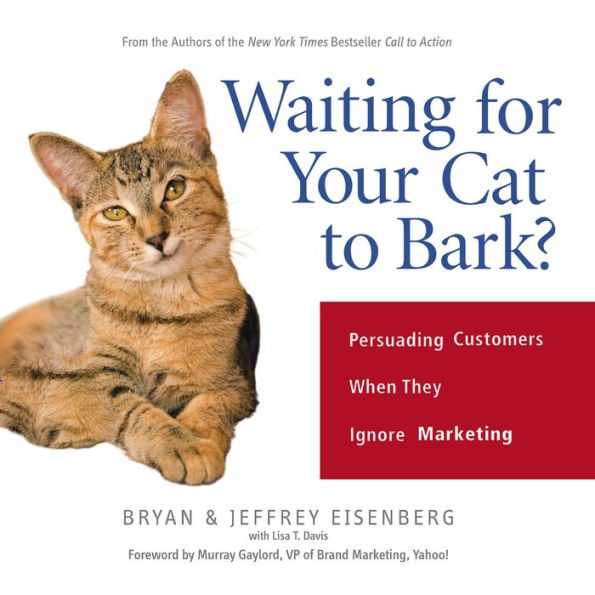A Matter Of Dogs vs. Cats
Most everyone remembers Pavlov and his salivating dogs from their Psych 101 class. Pavlov trained dogs to salivate at the sound of a bell or various other cues not usually associated with salivation, thereby bestowing on marketing departments the gift of conditioned response. For decades, marketers have been "ringing bells" in the form of advertisements and waiting for customers to salivate.
Conditioned response and mass marketing worked fine when media outlets were limited and so were a customer's choice of retailers; but as far back as the emergence of FM radio, the system has begun to deteriorate and become fragmented. What happens today, ask authors Bryan and Jeffrey Eisenberg, when emerging technologies, such as the Internet and TiVo, have caused a paradigm shift that undermines the mass-marketing model? In short, what happens when modern marketers find they're no longer ringing bells for dogs, but are faced with a bunch of savvy, independent cats?
In Waiting for Your Cat to Bark? the Eisenbergs lay out strategies for marketers to redefine themselves and their approaches in a fragmented market populated by consumers who demand more transparency than ever.
Confidence, Relevance and Overall Experience
Technologies such as cell phones, text messaging, e-mail and the Internet have given consumers access to a wide variety, depth and immediacy of information. The Internet also gives customers access to "niche" businesses that are able to build large customer bases through an online presence that gives them global reach. As a result, marketers are faced with a new landscape where potential customers are not just exposed to the marketing itself and the opinions of a small, geographically-limited circle of family and friends, but now have access to chat rooms, blogs and Web sites containing "word of mouth" testimonials about their products from thousands of customers around the world. In addition, media has become so fragmented that consumers can now essentially customize their own individual media experiences — everyone watches different television channels, listens to different radio stations and visits different Web sites; it's impossible to create one blanket marketing experience anymore.
While this new world may have made the old model obsolete, the Eisenbergs see the current situation as an exciting opportunity for businesses to "rewire" their marketing efforts. They believe marketers must learn to navigate the new landscape by keeping in mind a few key principles, such as the fact that they can no longer condition a response in consumers, but instead must refocus their efforts on creating consumer confidence by demonstrating the relevance of the product or service to their lives. According to the Eisenbergs, when it comes to choosing which seller to do business with, consumers are searching for the most satisfying experience, not just a specific product. If marketing cannot convince them of the relevance the product holds for their lives and if the consumer's subsequent interaction with the seller, either online, on the phone, or at a brick-and-mortar outlet is not friction-less and satisfying to their specific needs, then consumers will go back to the drawing board and find another seller who can offer them a better overall experience.
How Do You Satisfy a Cat?
If the modern consumer is more like a cat — independent, fickle and discerning — than a loyal dog, how does a business attract and satisfy them? In Waiting for Your Cat to Bark? the Eisenbergs outline "Persuasion Architecture," their system for retooling marketing in an Internet-driven and global marketplace. They kiss the old model goodbye and advocate that the seller strive to meet the customer on her terms, through use of techniques like going beyond the demographic data to build a stable of "personas" so that the business can respond to each type of customer in the ways most effective for them. Advising marketers to pull their heads out of the "corporate bottle" and to develop empathy for their customers, the Eisenbergs present a dynamic approach to addressing marketing in the Internet-age that will result in a competitive advantage.
Why We Like This Book
Supporting their points with information from a variety of fields, ranging from psychology to mythology to even haiku, the Eisenbergs present a quirky and engaging look at marketing in a style that mimics the individualistic media smorgasbord with which today's consumers engage. They illustrate their method of Persuasion Architecture with real-life examples that show the dangers of ignoring the changing marketing landscape and the rewards of embracing these changes head on. Copyright © 2006 Soundview Executive Book Summaries



